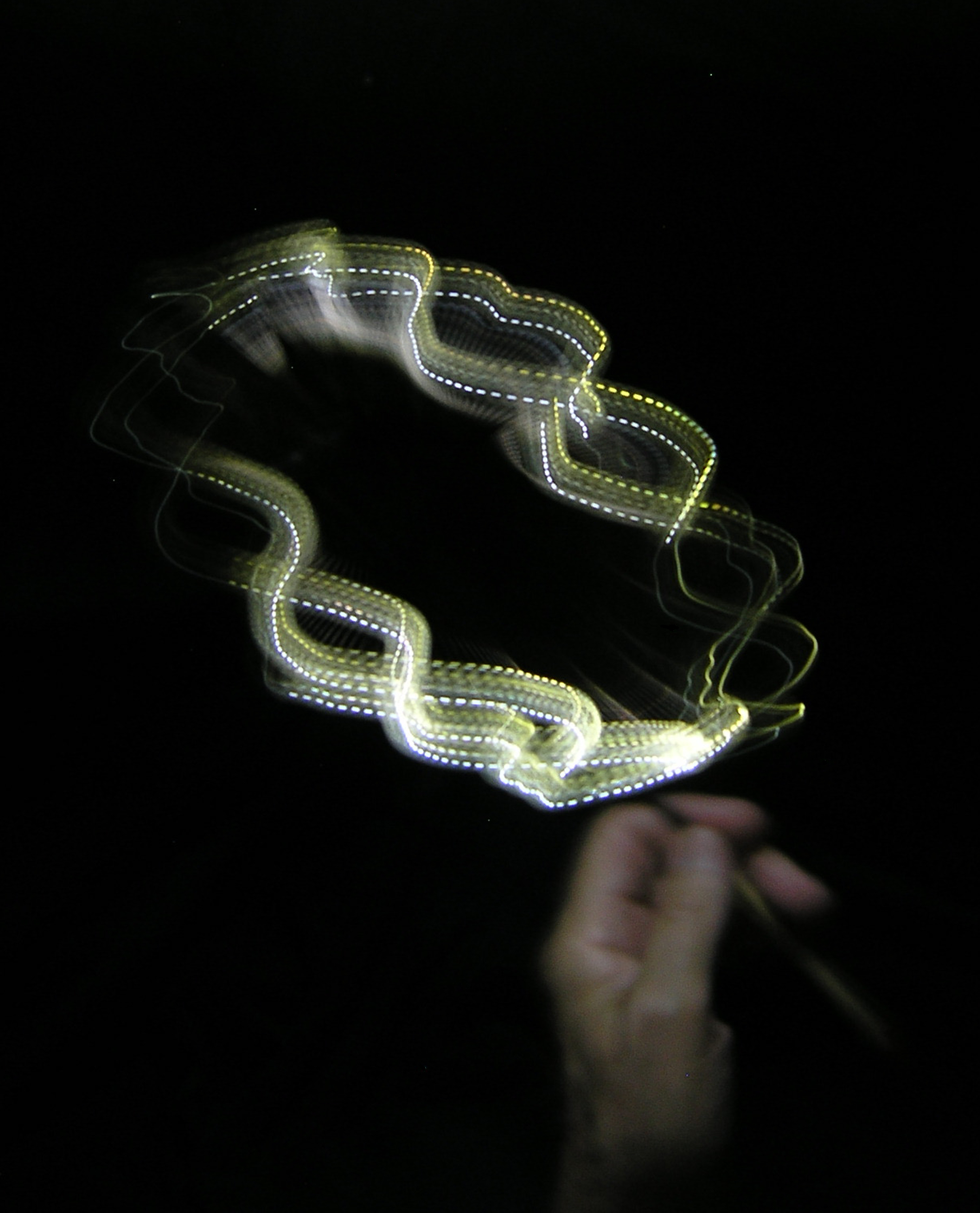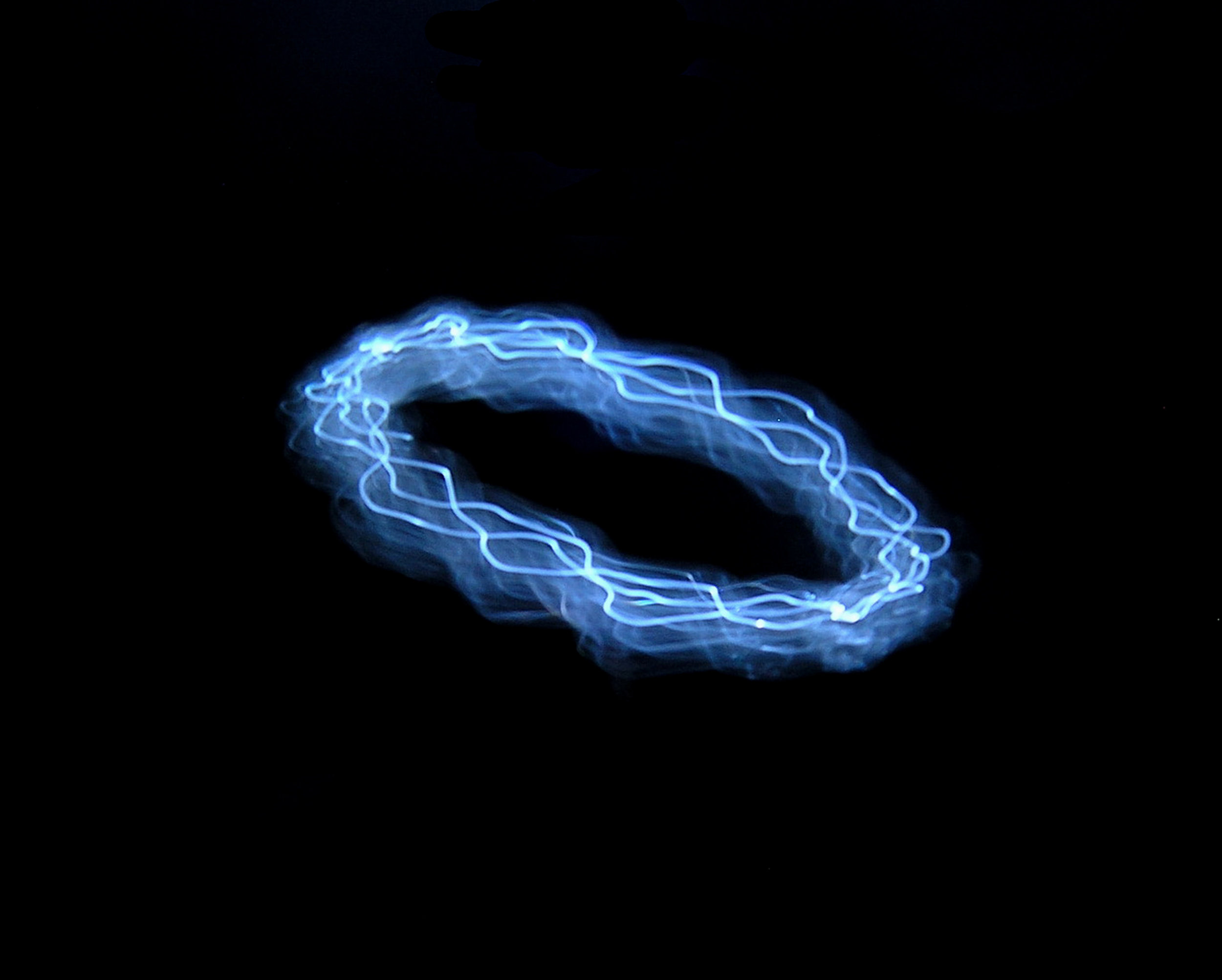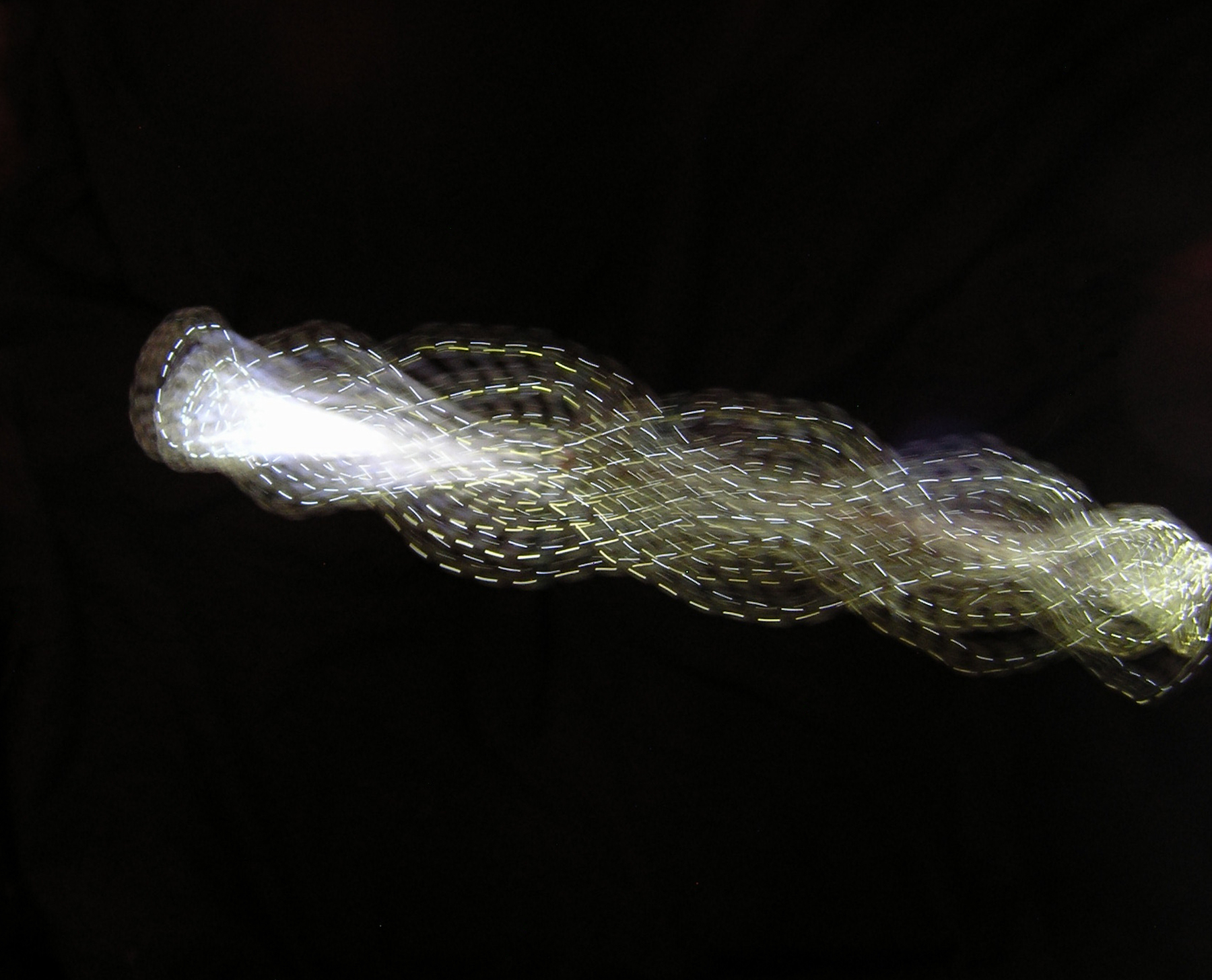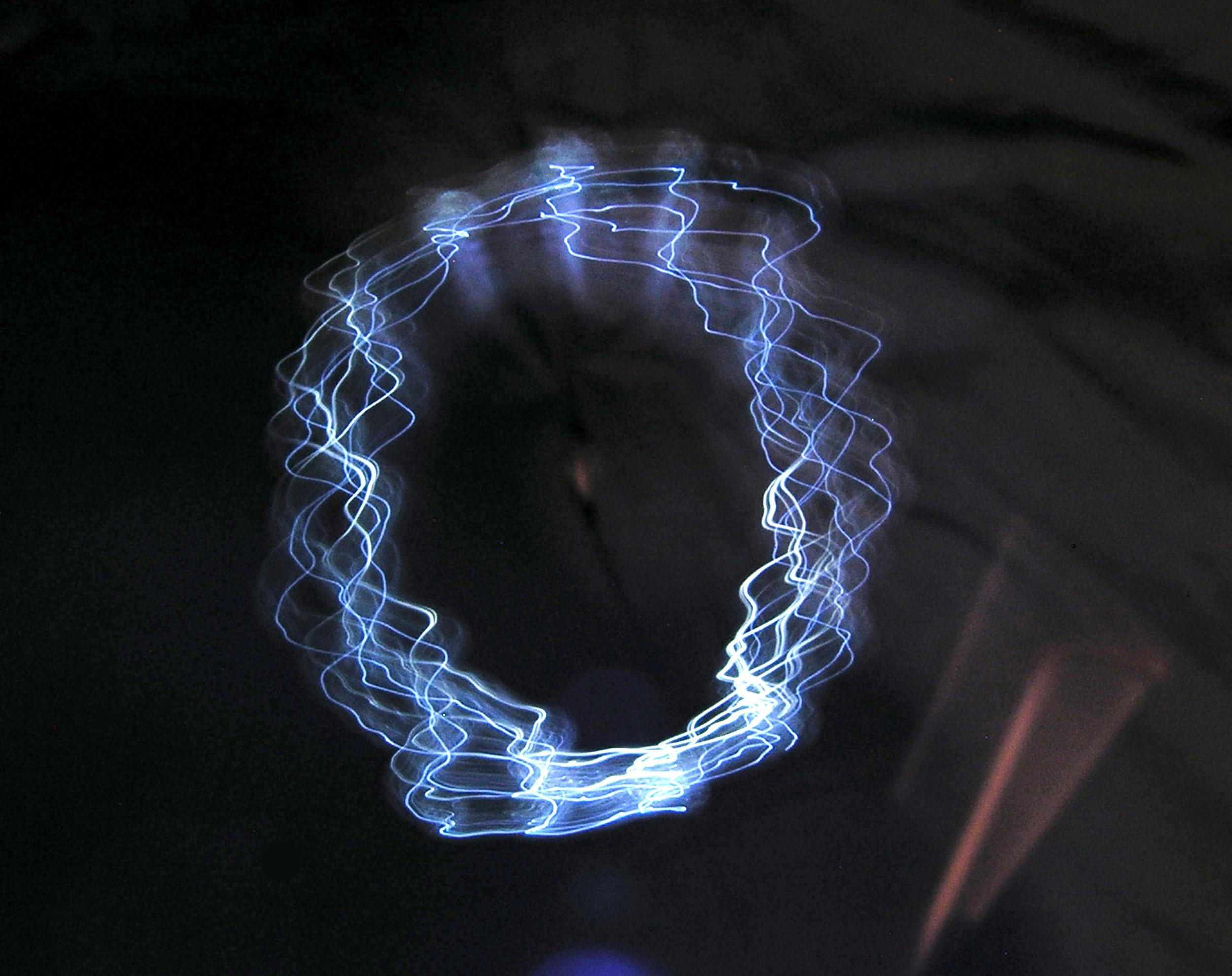
The kaleidophone was invented by British inventor/scientist Charles Wheatstone in 1827 as a “philosophical toy” offering a visible display of complex vibratory motion. Fixed to a solid wooden base, a thin steel rod with a glass bead attached to the top is illuminated by a light source and photographed at varying shutter speeds as it is struck or bowed closer to the base.

The kaleidophone was invented by British inventor/scientist Charles Wheatstone in 1827 as a “philosophical toy” offering a visible display of complex vibratory motion. Fixed to a solid wooden base, a thin steel rod with a glass bead attached to the top is illuminated by a light source and photographed at varying shutter speeds as it is struck or bowed closer to the base.

The kaleidophone was invented by British inventor/scientist Charles Wheatstone in 1827 as a “philosophical toy” offering a visible display of complex vibratory motion. Fixed to a solid wooden base, a thin steel rod with a glass bead attached to the top is illuminated by a light source and photographed at varying shutter speeds as it is struck or bowed closer to the base.

The kaleidophone was invented by British inventor/scientist Charles Wheatstone in 1827 as a “philosophical toy” offering a visible display of complex vibratory motion. Fixed to a solid wooden base, a thin steel rod with a glass bead attached to the top is illuminated by a light source and photographed at varying shutter speeds as it is struck or bowed closer to the base.

The kaleidophone was invented by British inventor/scientist Charles Wheatstone in 1827 as a “philosophical toy” offering a visible display of complex vibratory motion. Fixed to a solid wooden base, a thin steel rod with a glass bead attached to the top is illuminated by a light source and photographed at varying shutter speeds as it is struck or bowed closer to the base.





The kaleidophone was invented by British inventor/scientist Charles Wheatstone in 1827 as a “philosophical toy” offering a visible display of complex vibratory motion. Fixed to a solid wooden base, a thin steel rod with a glass bead attached to the top is illuminated by a light source and photographed at varying shutter speeds as it is struck or bowed closer to the base.
The kaleidophone was invented by British inventor/scientist Charles Wheatstone in 1827 as a “philosophical toy” offering a visible display of complex vibratory motion. Fixed to a solid wooden base, a thin steel rod with a glass bead attached to the top is illuminated by a light source and photographed at varying shutter speeds as it is struck or bowed closer to the base.
The kaleidophone was invented by British inventor/scientist Charles Wheatstone in 1827 as a “philosophical toy” offering a visible display of complex vibratory motion. Fixed to a solid wooden base, a thin steel rod with a glass bead attached to the top is illuminated by a light source and photographed at varying shutter speeds as it is struck or bowed closer to the base.
The kaleidophone was invented by British inventor/scientist Charles Wheatstone in 1827 as a “philosophical toy” offering a visible display of complex vibratory motion. Fixed to a solid wooden base, a thin steel rod with a glass bead attached to the top is illuminated by a light source and photographed at varying shutter speeds as it is struck or bowed closer to the base.
The kaleidophone was invented by British inventor/scientist Charles Wheatstone in 1827 as a “philosophical toy” offering a visible display of complex vibratory motion. Fixed to a solid wooden base, a thin steel rod with a glass bead attached to the top is illuminated by a light source and photographed at varying shutter speeds as it is struck or bowed closer to the base.